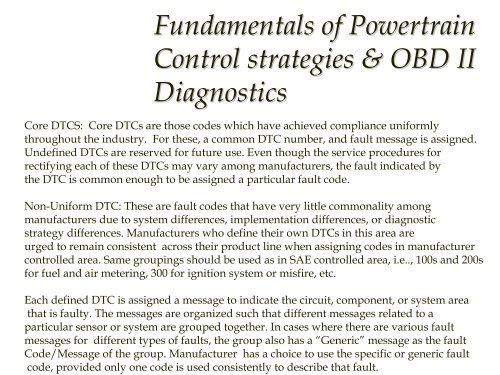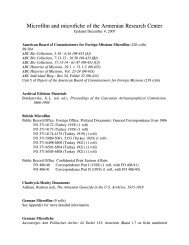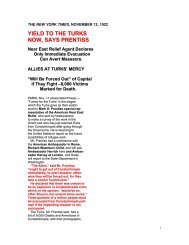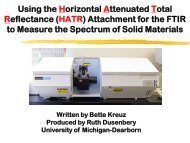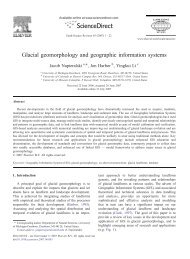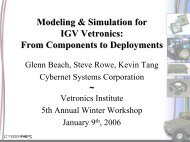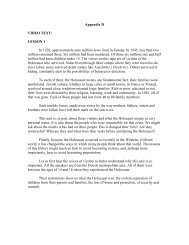Introduction to On Board Diagnostics (II)
Introduction to On Board Diagnostics (II)
Introduction to On Board Diagnostics (II)
Create successful ePaper yourself
Turn your PDF publications into a flip-book with our unique Google optimized e-Paper software.
Fundamentals of PowertrainControl strategies & OBD <strong>II</strong><strong>Diagnostics</strong>Core DTCS: Core DTCs are those codes which have achieved compliance uniformlythroughout the industry. For these, a common DTC number, and fault message is assigned.Undefined DTCs are reserved for future use. Even though the service procedures forrectifying each of these DTCs may vary among manufacturers, the fault indicated bythe DTC is common enough <strong>to</strong> be assigned a particular fault code.Non-Uniform DTC: These are fault codes that have very little commonality amongmanufacturers due <strong>to</strong> system differences, implementation differences, or diagnosticstrategy differences. Manufacturers who define their own DTCs in this area areurged <strong>to</strong> remain consistent across their product line when assigning codes in manufacturercontrolled area. Same groupings should be used as in SAE controlled area, i.e.., 100s and 200sfor fuel and air metering, 300 for ignition system or misfire, etc.Each defined DTC is assigned a message <strong>to</strong> indicate the circuit, component, or system areathat is faulty. The messages are organized such that different messages related <strong>to</strong> aparticular sensor or system are grouped <strong>to</strong>gether. In cases where there are various faultmessages for different types of faults, the group also has a “Generic” message as the faultCode/Message of the group. Manufacturer has a choice <strong>to</strong> use the specific or generic faultcode, provided only one code is used consistently <strong>to</strong> describe that fault.


